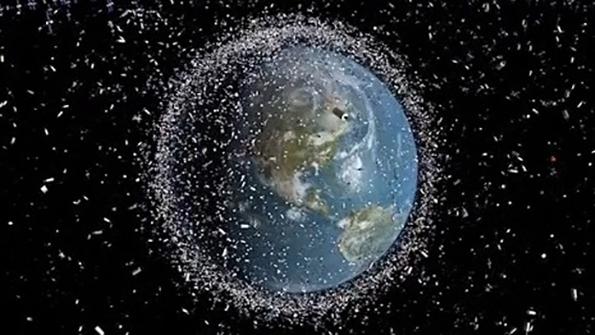Opinion: The Road to Sustainable Space Industry Growth

The global space economy is expanding rapidly, fueled by declining launch costs, high-volume satellite production drawing on miniaturized components and the expanding possibilities for government and commercial space missions. But unlike the industrial revolution of a bygone era, when economic expansion was mostly unencumbered by environmental concerns, our society now recognizes the extent to which human activity creates risks for the natural world. Today the space sector has an opportunity to stay ahead of the growth curve and consider practical ways to future-proof for longer term sustainability.
So how can the space industry advance while applying lessons from past environmental consequences? Government and commercial space players have already recognized the environmental problem in orbit by improving practices to avoid orbital debris. However, the space industry touches a wide range of operating domains, including terrestrial, maritime and atmospheric environments. Space sector activities generate toxic waste, water pollution, air acidification and ozone damage. Spaceport operations can encroach on ecosystems, wildlife habitats, wetlands and other sensitive areas.
To manage and mitigate these environmental impacts, we can apply environmental life-cycle assessments (E-LCA) to guide the space industry from a traditional linear economy (take-make-use and dispose) to a circular economy (make-use-recycle-and/or reuse). Circular strategies can also motivate the space industry to realize cradle-to-grave operational and economic efficiencies—from satellite manufacturing to end of life. Circular designs and practices could include: cleaner manufacturing processes; technologies to extend satellite life such as on-orbit repair and servicing; reusable rockets to reduce reentry debris; cleaner fuels; or avoiding certain materials that can contribute to resource depletion.
Why now? A key tenet of circular strategies is to incorporate environmental considerations into the industrial process or facility design to limit or prevent pollution, waste generation or reduce greenhouse gases. In addition to a broad-based push for energy efficiency measures and renewable energy, older industries such as pulp and paper, pharmaceutical and oil and gas refineries have spent billions modifying established infrastructure to accommodate environmental regulations and policies. Other industries, such as cement, iron and steel, are now working to integrate carbon capture technologies. Such retrofit efforts are expensive. While the last decade has seen enormous growth in the space sector, we may be on the cusp of even more dramatic expansion.
There is no time to waste. The U.S. government, as a large and influential buyer, has an opportunity to accelerate this change. The Defense Department and other civil-sector space stakeholders can start by supporting the harmonization of E-LCA methodologies and frameworks with international partners with an eye toward eventually incorporating these frameworks in contracts for space products and services. Such efforts, motivated by public purpose, could catalyze a sustainable space industry while building transparency and trust across the space community.
Adoption of life-cycle-related requirements could impose a significant implementation burden, though. To help overcome early hurdles, the research community could work with regulators and the space industry to close knowledge gaps.
Regulators will also need to be comfortable with partial information because life-cycle inventory data can be difficult to obtain, and best estimates often need to suffice. Government acquisition agencies should also consider a phased approach. As the life-cycle discipline matures, the space community can build a body of knowledge. This could include establishing a center of excellence to ensure analytical rigor and objectivity for assessing space environmental impacts. Ensuring E-LCA integrity can also help to overcome vested commercial interests among competing companies vying for social and market benefits from lower environmental footprints.
Finally, the government could fund key studies to address “unknown unknowns,” such as environmental impacts to the upper atmosphere. The space industry is unique in that it is the only human activity that injects pollution directly into the fragile stratospheric ozone. The industry should strive to understand how the introduction of black carbon from rocket exhaust plumes on the way up to space and how ablated particulates from reentry debris on the way down to Earth might alter the stratosphere, including the ozone.
Industrial tycoons during the last century reaped industrial economic benefits, while ignoring the costs of pollution and ecosystem damages.
We can do better. The space industry has an opportunity to choose the higher road, illuminated by bright spots such as reusable or more efficient designs as well as the potential to attract green investors and customers. Ultimately, a space industry boom and a clean and sustainable space sector are not mutually exclusive goals. However, achieving this win-win requires some upfront work before the industry accelerates growth.
Karen Jones a senior policy analyst in the Center for Space Policy and Strategy at The Aerospace Corp.





Comments
Anyway, notwithstanding the insurance costs, it is now urgent that Europe and the USA invest heavily in clean space technologies. We need in the very short future techniques and procedures that work in order to secure a clean space as well as to clean low orbits.
Bernard GUILLAUME